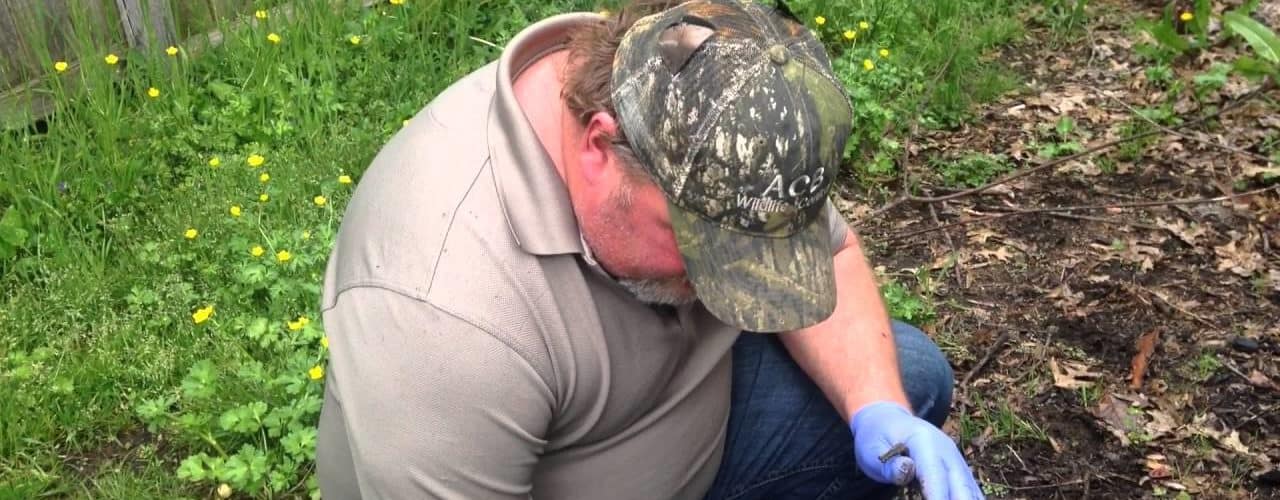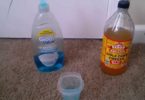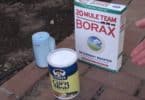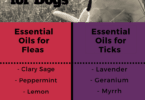Moles are mammals about the size of a chipmunk. They are approximately 6 to 8 inches in length and weigh 3 to 6 ounces. Moles have bad eyesight, but they are not blind – they have tiny eyes that provide some sight. Since they live underground they have no need of good eyesight. A mole has one litter per year consisting of two to six young. They are insectivores – they eat insects, particularly grubs and worms. Although moles may be beneficial in controlling some insect outbreaks, mole activity can cause considerable damage to lawns in the form of tunnels or mounds that can be unsightly, disturb root systems, and provide travel lanes for other small mammals. Home owners have several options for controlling mole activity.
Habitat modification
Over-watering your lawn can bring invertebrates closer to the surface. This makes mole tunnels more visible as moles dig to find their food sources of grubs and earthworms. Reducing the amount or frequency of watering will help make tunnels less visible. Removing their source of food will force moles to seek a new habitat elsewhere. Ridding the lawn of grubs by chemical applications is an option, but not necessarily safe for children and pets. Reducing the amount of turf grass on your property will reduce the food source and, consequently, the visible signs of damage. Ultimately, converting the grassy areas of a yard to gardens, paths, and other natural habitats can save time and money over the long run in driving moles from the area.
Natural mole repellants
Numerous home remedies and natural repellants can be used to encourage the relocation of mole populations, but results are inconsistent at best. This option is safer for children and pets, however. Natural mole repellent can be as simple as planting plants that deter moles around the perimeter of the yard. Daffodils, marigolds, garlic, alliums, fritillaries, mole plant, and castor bean plants are excellent choices. Mole plant and castor bean plant are considered poisonous, and should not be planted in yards with children and pets.
Home remedies
Home remedies for mole control are numerous. Pouring any of the following readily available home products into the mole tunnels is said to encourage moles to seek other habitats. Pickle juice, broken glass, red pepper, bleach, mothballs, rose branches, or human hairballs is said to be successful for controlling mole populations. Vibrators and ultrasonic devices are sold in stores for the purpose of getting rid of moles.
Castor oil is a popular ingredient in repellents. For a homemade repellent, mix 6 oz of castor oil and 2 tbsp of dish soap in one gallon of water to make a concentrate. Mix one ounce concentrate to one gallon of water. Apply to the lawn; reapply after rain or
watering.
Cats are a natural predator of moles. Pour used cat litter into the run or mole hill to get rid of moles. This must be repeated until the moles have disappeared.
Trapping
Trapping is the most reliable method of getting rid of moles in the lawn. Trapping success is greatest during the spring and fall after heavy rains. Traps should be set in active, collapsed surface burrows. Harpoon, scissor-jaw, and choker loop traps are very effective as mole traps. Be sure to follow the printed instructions when purchasing a trap to ensure safe, effective, and humane deployment.
Ridding a lawn of moles is challenging. Using natural mole repellents combined with some home remedies may take some time, particularly if the number of moles is large. Natural repellents and home remedies are not consistent in effectiveness. However, drastic methods such as trapping, aren’t always necessary.
Related Video:
Home & Lawn Pest Control : How to Get Rid of Moles in Your Lawn
<>
References:
Ohio State Extension Factsheet: Effective Mole Control
<>
<>







